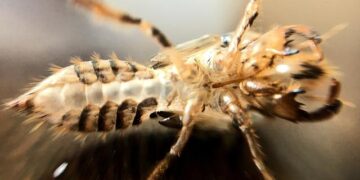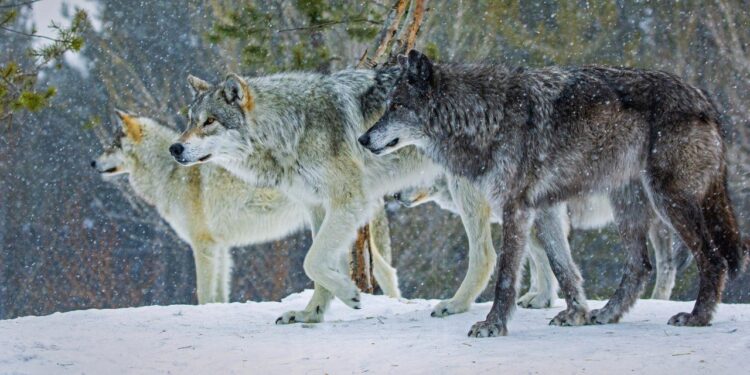Yellowstone National Park is witnessing a remarkable ecological revival as the return of wolves has triggered a dramatic surge in aspen tree growth not seen in eight decades. Since wolves were reintroduced to the park in the mid-1990s, these apex predators have helped restore balance to the ecosystem, curbing overgrazing by elk and allowing aspen populations to rebound. Scientists say this resurgence marks one of the most striking examples of how top predators can reshape environments, reversing nearly a century of decline and offering new hope for ecosystem restoration efforts worldwide.
Wolves Reintroduce Balance to Yellowstone Ecosystem Leading to Aspen Tree Revival
The resurgence of wolves in Yellowstone National Park has triggered a profound ecological transformation, restoring the natural checks and balances that had long been missing. With the apex predators back in the ecosystem, herbivore populations such as elk have experienced increased predation pressure. This has led to a significant reduction in overgrazing, allowing young aspen trees-previously decimated for decades-to flourish once again. Scientists report that aspen saplings have increased by over 50% in monitored areas, marking a historic ecological rebound not seen in nearly a century.
Ecologists attribute this revival to a cascade of interlinked changes resulting from wolf reintroduction. The presence of wolves has altered herbivore behavior, encouraging elk and deer to avoid certain grazing hotspots near water bodies and riparian zones. This behavioral shift has given a crucial breathing space for aspen groves to regenerate naturally. Below is a snapshot of the primary ecological impacts observed over the last 20 years:
- Wolf population growth: From near extinction to over 100 individuals
- Elk population decline: Estimated reduction of 40% in core Yellowstone areas
- Aspen sapling density: Fourfold increase in previously grazed locations
- Riparian vegetation cover: Expanded by 30% due to reduced browsing
| Year | Wolf Population | Elk Population | Aspen Growth Rate |
|---|---|---|---|
| 1995 | 14 | 19,000 | Baseline |
| 2010 | 98 | 13,500 | +200% |
| 2023 | 120 | 11,400 | +400% |
Scientists Reveal How Predator Presence Alters Vegetation Dynamics and Wildlife Behavior
The reintroduction of wolves to Yellowstone National Park has triggered a remarkable ecological transformation, with a significant resurgence of aspen trees recorded for the first time in eight decades. Researchers have linked this phenomenon to a shift in browsing behavior among elk, the predators’ primary prey. The presence of wolves instills a state of heightened vigilance in elk populations, causing them to avoid open areas where young aspen saplings typically grow. This behavioral change has allowed the vegetation to recover, fostering richer biodiversity and altering the park’s overall landscape.
- Improved aspen regeneration: Growth rates have increased by over 30% compared to pre-wolf times.
- Reduced overgrazing: Elk movement patterns changed, limiting herbivore pressure on young trees.
- Ripple effects: Other species such as beavers and songbirds have benefited from the revitalized vegetation.
| Year | Aspen Growth Rate (%) | Elk Population (estimate) |
|---|---|---|
| 1995 (pre-wolf) | 10 | 20,000 |
| 2005 | 22 | 18,000 |
| 2023 | 43 | 15,200 |
Conservationists Urge Continued Protection of Apex Predators to Sustain Forest Regeneration
Since wolves were reintroduced to Yellowstone National Park, ecosystem dynamics have dramatically shifted, revealing the vital role apex predators play in forest regeneration. The resurgence of wolves has curbed overgrazing by elk, allowing young aspen trees-once decimated by herbivore pressure-to thrive at levels not witnessed in over eight decades. This phenomenon highlights a trophic cascade effect, where the presence of top predators balances herbivore populations, ultimately nurturing vegetation and promoting biodiversity.
Key ecological impacts observed include:
- Increased growth of aspen and willow saplings
- Improved habitat for songbirds and beavers
- Enhanced soil stability and water retention
| Aspect | Before Wolves | After Wolves |
|---|---|---|
| Aspen Regrowth | Sparse and stunted | Surging, healthy stands |
| Elk Population Management | Uncontrolled browse | Reduced and regulated |
| Biodiversity Increase | Minimal diversity | Notable rise in species |
Key Takeaways
The return of wolves to Yellowstone National Park has not only restored balance to the ecosystem but has also triggered a remarkable resurgence of aspen trees, a phenomenon not observed in eight decades. This case underscores the profound impact apex predators can have on their environment, highlighting the intricate interconnectedness of nature. As scientists continue to monitor these changes, Yellowstone serves as a powerful example of how targeted conservation efforts can lead to the revitalization of entire habitats, offering hope for the restoration of ecosystems worldwide.































